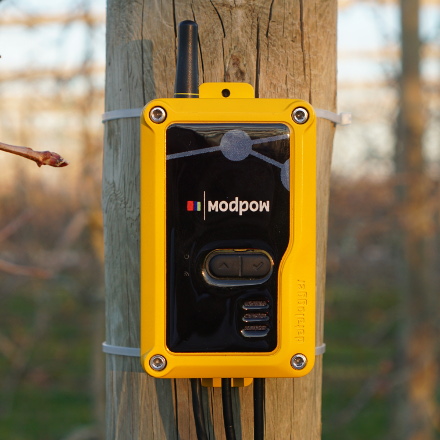
While the vast majority of fruit crops is using fertirrigation now, it is important to emphasize a few things to improve water and nutrient status of our crops. It should be noted that most of the nutrients the plants require are dissolved in the soil water, and are absorbed by the plants via mass flow. It is the result of nitrogen , calcium, sulfur and magnesium. That is, if the availability of water in the soil is low, the plant cannot absorb nutrients properly, and this can affect its growth and development.
If the water deficit is moderate, the plant will be able to absorb some of the nutrients, however, it will require more energy to do so, which could hinder growth and development. Low availability of irrigation water can be caused by either a low amount of water in the soil (ex. drought) or the hysteresis of soil water-retention (ex. salinity). The presence of salts which are more soluble than gypsum increases the osmotic potential of the soil and hinders the absorption of water by the crops. It should be noted that other nutrients such as potassium and phosphorus are absorbed by the plant by diffusion. In this case, water does not play as an important role in the above system. Still, the absorption of these nutrients is affected indirectly due to the absorbing roots, which suffer continuous renewal throughout this process. They will develop faster if the moisture conditions and soil aeration are appropriate. We must remind that, if a plant does not transpire, it will not absorb water nor nutrients from the soil. This concept may seem trivial, however, it is important that we keep in mind fertilization is futile if the crop's root system is not active or if the sap flow is low (defoliated trees). Plant leaves grow progressively by carbohydrates accumulated in the plant’s storage tissues (Ex.trunk, branches and roots). Once the first leaves are formed they begin photosynthesis, transpiration and form the upward sap flow which allows for nutrient absorption through the roots. Until the plants are well foliated, complete nutrient absorption does not occur. This is the reason for combining irrigation and fertilization at the appropriate time in the crop cycle. When a plant experiences some kind of water shortage, its absorption of nutrients could be significantly reduced. This may result in physiological differences, especially in the case of nutrients that require a high energy consumption (ex. calcium). Recent studies done in Geneva (New York, USA) by a team led by Terence Robinson show how periods of short-term stress can cause Bitter Pit in Honeycrisp apple trees. In these experiments, the most critical periods are from bloom to petal fall. It has been found to be the most common time we ignore the importance of irrigation. A proper irrigation management system can reduce Bitter Pit ensuring a constant absorption of calcium from the soil.

Nevertheless, it is important to mention that the water stress are not always undesirable. A proper management of drought can be used to control the crops in a particular cycle phase, or to maximize certain fruit quality attributes (ex. soluble solid content). There are many different tools and methodologies used to determine the water status of crops. Today the only direct and most reliable measurement is of stem water potential by using the Scholander chamber.

As technical advisers we continually experiment with these concepts and measurements, testing them in order to improve our agricultural consulting service. For fruit development management, it is important to have a good fertilization plan that includes the correct doses, ratio and intervals for the application of nutrients. Nevertheless, a good fertilization plan will not prove to be beneficial if we neglect the irrigation system. Ultimately, an imperfect irrigation system results in incomplete fertilization.




